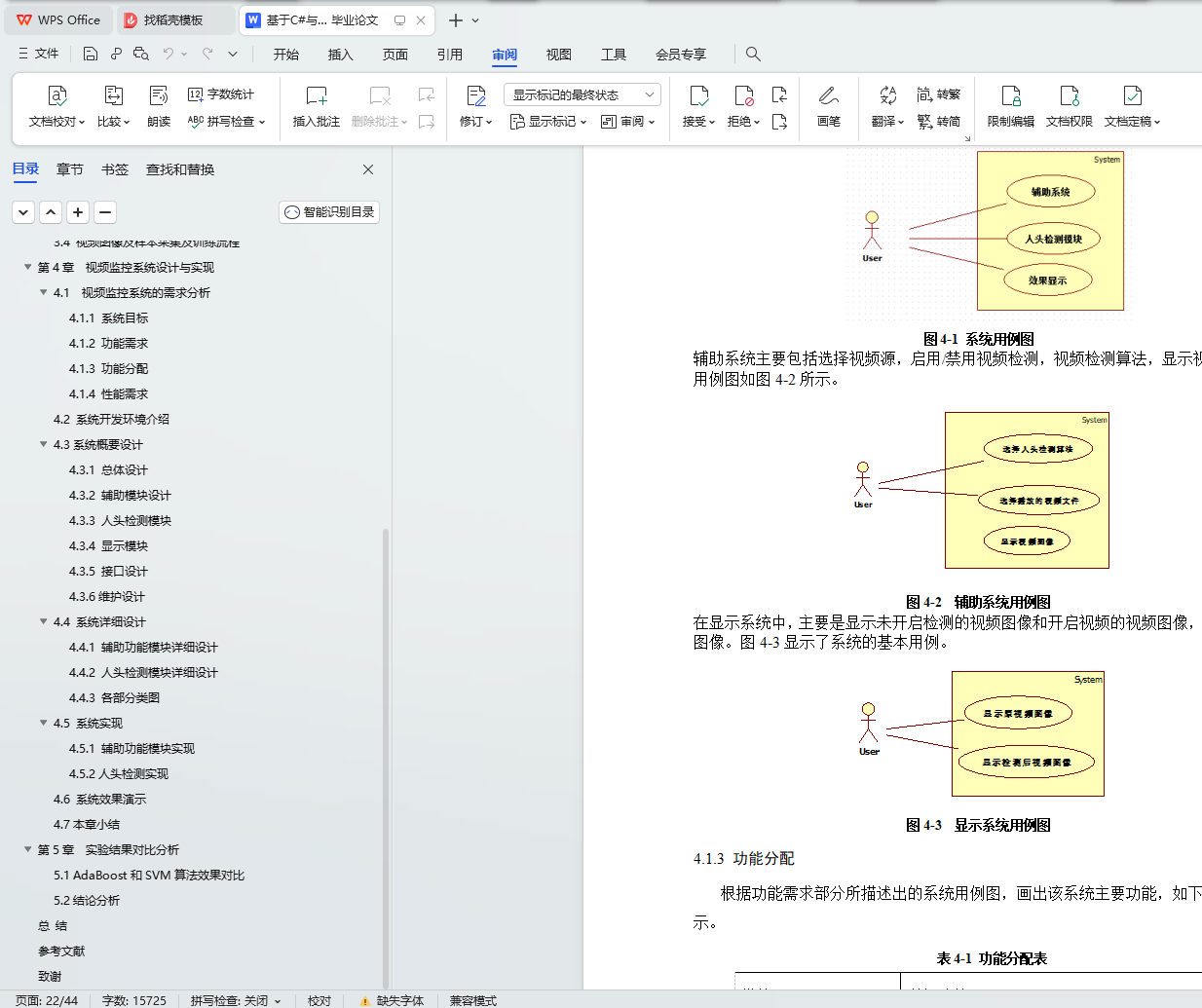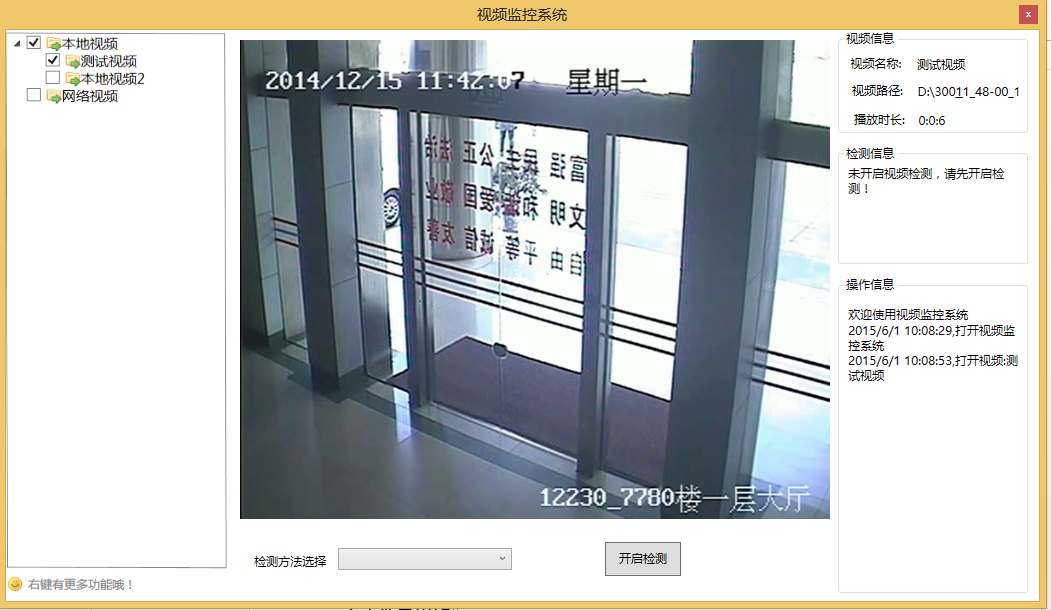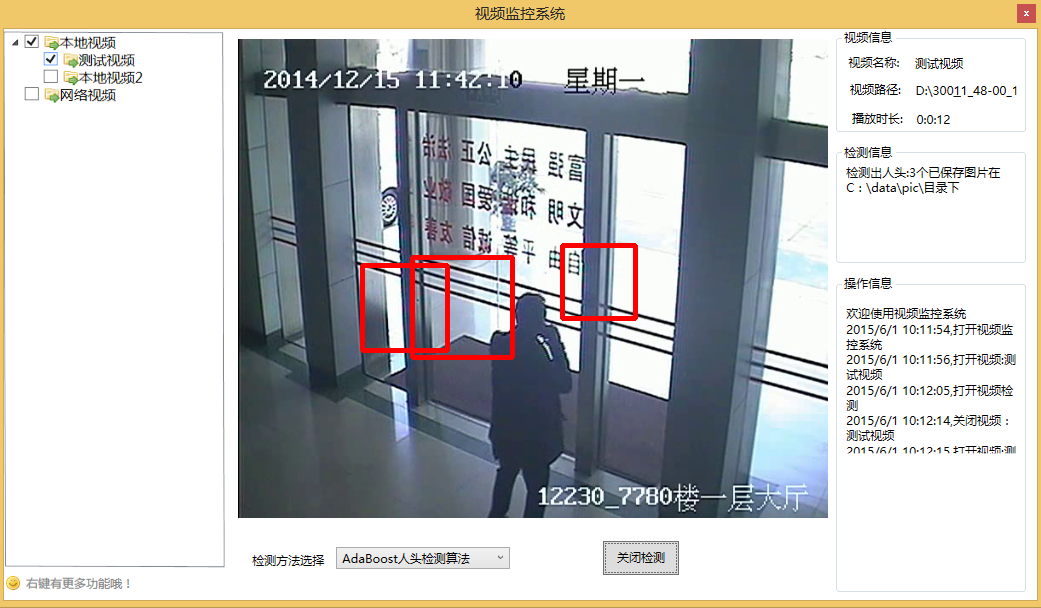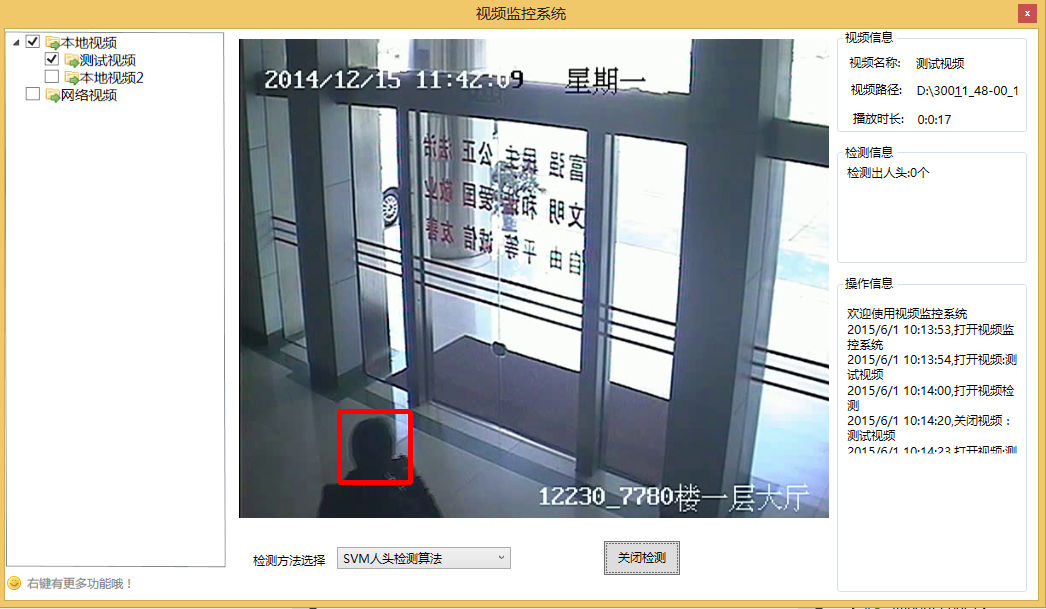门禁监控视频软件设计与实现
摘要:传统的门禁视频监控系统一般是无法对人员进出门禁时进行人头检测,只能通过简单的硬件设施将监控画面传到后端,由监控人员人工进行监视判断。这样会加大监控成本也增加了监控人员的压力,同时也对监控人员的身体健康产生较大影响。所以就有必要设计一款新型门禁监控视频系统来实现人头检测功能,本文设计出的一款基于WPF的门禁监控视频系统,将基于Haar特征的AdaBoost人头检测算法和基于Hog特征的SVM人头检测算法进行比较,在人员进出门禁系统时进行人头检测并将检测结果以图像方式进行保存。
基于WPF的门禁视频监控系统,采用C#与EmguCV的技术,是实现对人员出入门禁系统时进行人头检测。论文主要分析了两种算法的特征值的提取方法以及利用这两种算法进行人头检测,设计出一个可以检测人头的门禁监控视频。
关键词:视频监控; 人头检测; C#; EmguCV; AdaBoost; SVM
Access control monitoring of video software Design and Implementation
Abstract:Traditional access control video surveillance systems are generally unable to detect the head of personnel entering and leaving access only through a simple hardware facilities will spread to the rear end of the monitor screen, the monitoring personnel to monitor artificial judgment. This will increase monitoring costs are increasing pressure monitoring personnel, it will be have a greater impact on health monitoring personnel of the body. Therefore it is necessary to design a new access control system to achieve video head detection, designed out of a WPF-based access control and video systems, will head detection algorithm based on AdaBoost and Haar features characteristic of SVM-based Hog head detection algorithm comparing head detection and test results performed at the personnel access to the access control system to save the image mode..
WPF-based access control video surveillance systems, using C # and EmguCV technology is to achieve when people head out access system testing. Thesis analyzes the eigenvalues extraction and the use of these two algorithms two algorithms detect head, designed to detect a surveillance video access control head.
Key words: Video Monitor, Head Detection, C#, EmguCV, AdaBoost, SVM
目 录
第1章 绪 论
1.1 选题背景和意义
1.2 视频监控研究现状
1.3 本文研究内容和章节安排
第2章 视频监控系统中的关键技术
2.1图像处理技术
2.2 WPF
2.3 人头检测技术
2.4 门禁视频监控系统工作流程
2.5 本章小结
第3章 人头检测算法实现
3.1 分类器设计原理
3.2 基于Haar特征点的AdaBoost人头检测算法
3.2.1 AdaBoost
3.2.2 算法描述
3.3 基于Hog特征点的SVM人头检测算法
3.3.1 SVM
3.3.2 算法描述
3.4 视频图像及样本采集及训练流程
第4章 视频监控系统设计与实现
4.1 视频监控系统的需求分析
4.1.1 系统目标
4.1.2 功能需求
4.1.3 功能分配
显示模块
4.1.4 性能需求
4.2 系统开发环境介绍
4.3系统概要设计
4.3.1 总体设计
4.3.2 辅助模块设计
4.3.3 人头检测模块
4.3.4 显示模块
4.3.5 接口设计
4.3.6维护设计
4.4 系统详细设计
4.4.1 辅助功能模块详细设计
4.4.2 人头检测模块详细设计
4.4.3 各部分类图
4.5 系统实现
4.5.1 辅助功能模块实现
4.5.2人头检测实现
4.6 系统效果演示
4.7本章小结
第5章 实验结果对比分析
5.1 AdaBoost和SVM算法效果对比
5.2结论分析
总结
参考文献
致谢


























